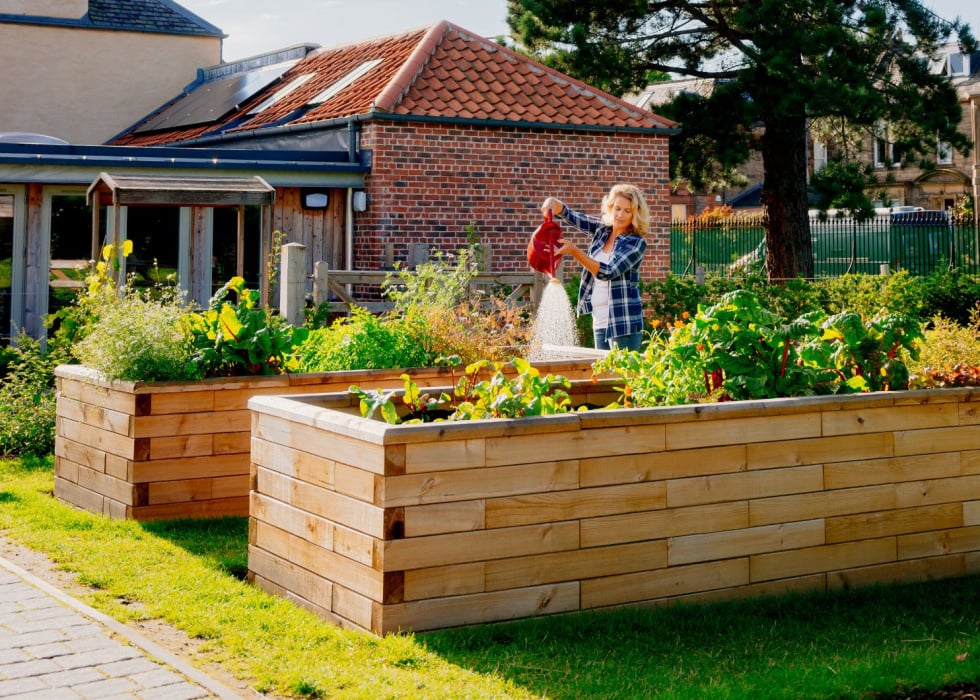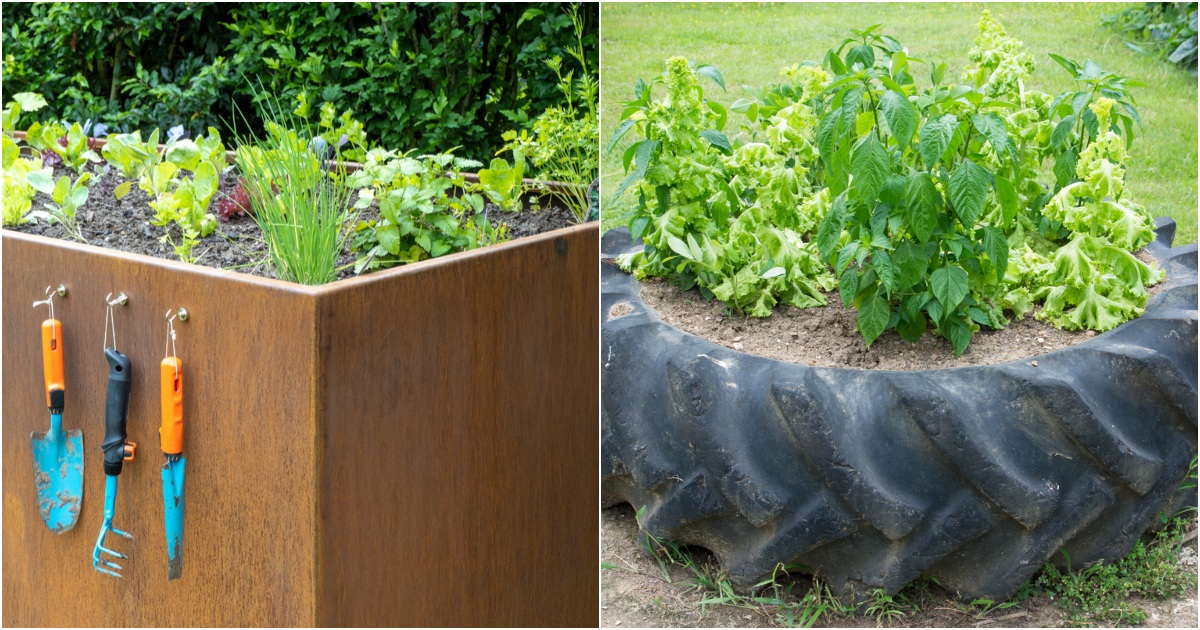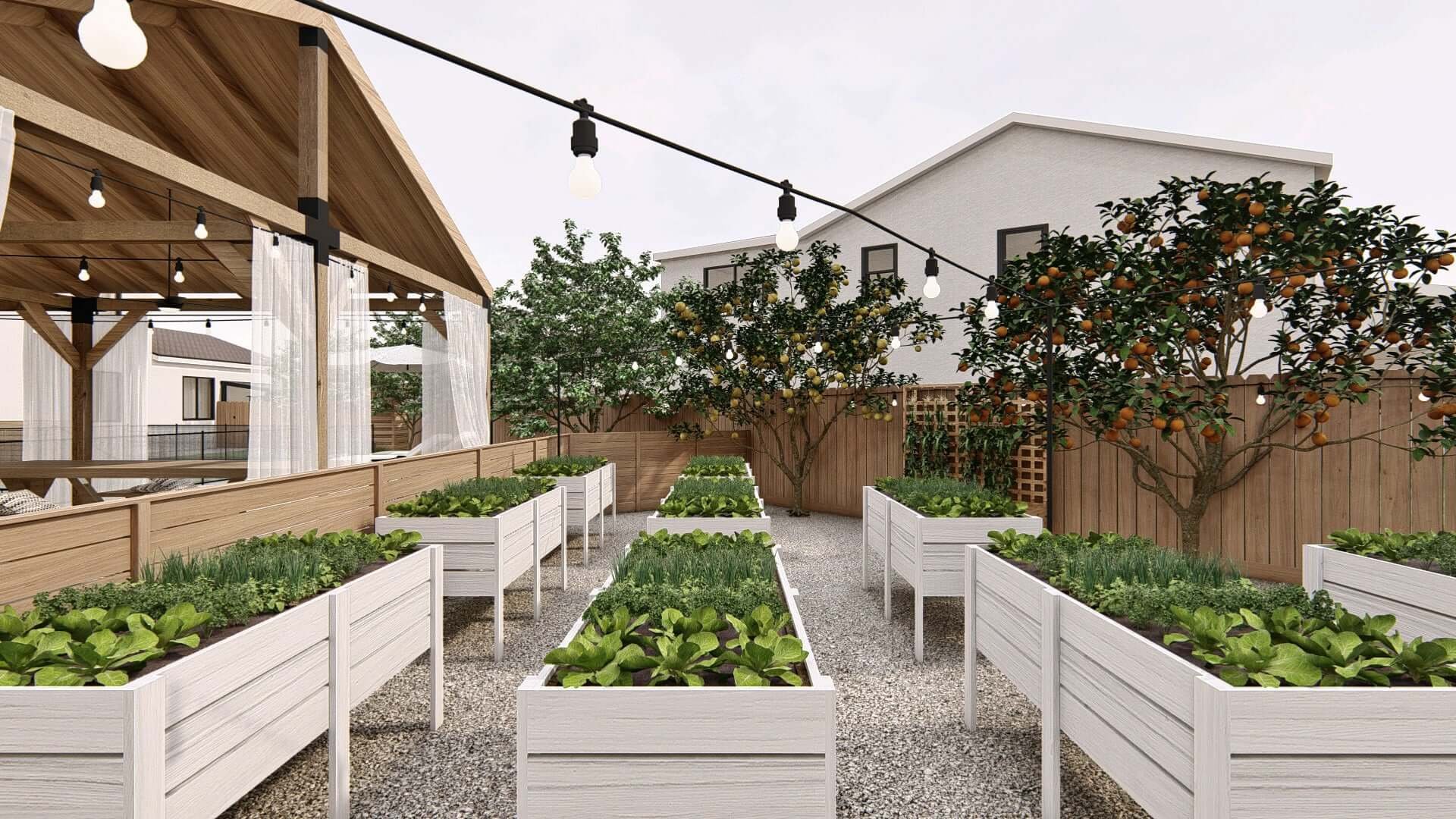How To Build A Raised Vegetable Patch In Minutes
How to Build a Raised Vegetable Patch in Minutes
Growing your own vegetables is a great way to save money, eat healthier, and get some exercise. But if you don't have a lot of space, a raised vegetable patch is a great option.
A raised vegetable patch is a raised bed that is filled with soil and planted with vegetables. Raised vegetable patches have several advantages over traditional in-ground gardens. They are easier to weed, they retain moisture better, and they can be built in a variety of locations, including areas with poor soil or limited sunlight.
In this blog post, I will show you how to build a raised vegetable patch in just a few minutes.
What You Will Need
- 2x4s
- Wood screws
- Landscape fabric
- Soil
- Vegetables
Step 1: Choose a Location
The first step is to choose a location for your raised vegetable patch. The ideal location is in full sun, but you can also grow vegetables in partial shade. The site should also be well-drained.
Step 2: Build the Frame
The next step is to build the frame for your raised vegetable patch. The frame can be made from any type of wood, but 2x4s are a good option because they are strong and relatively inexpensive.
The size of your raised vegetable patch will depend on your needs. If you are only planning to grow a few vegetables, you can build a small patch. If you want to grow a large variety of vegetables, you can build a larger patch.
Once you have chosen the size of your raised vegetable patch, you can start building the frame. The frame should be about 12 inches high. This will help to keep the soil warm and prevent weeds from growing.
Step 3: Add Landscape Fabric
Once the frame is built, you need to add landscape fabric to the bottom. Landscape fabric will help to prevent weeds from growing through the soil.
Step 4: Add Soil
The next step is to add soil to the raised vegetable patch. You can use any type of soil, but a good quality potting mix is a good option.
Step 5: Plant Your Vegetables
Now it's time to plant your vegetables! Choose vegetables that are suited to your climate and growing conditions.
Step 6: Water and Fertilize
Your raised vegetable patch will need to be watered regularly. You should also fertilize your vegetables every few weeks.
That's it! You've now built a raised vegetable patch in just a few minutes.
Are you thinking about starting a raised vegetable patch? If so, you've come to the right place! A raised vegetable patch is a great way to grow your own food, even if you don't have a lot of space. Raised beds are also easier to care for than traditional gardens, and they can help to improve the quality of your soil.
If you're interested in learning more about raised vegetable patches, I recommend visiting Garden Wiki. This website has a wealth of information on everything you need to know, from choosing the right location for your bed to planting and harvesting your crops.
FAQ of raised vegetable patch
1. What are the benefits of using a raised vegetable patch?
There are many benefits to using a raised vegetable patch. Here are a few of the most notable:
- Raised beds are easier to care for than traditional in-ground gardens. They are easier to weed, water, and harvest.
- Raised beds warm up faster in the spring, which allows you to start planting earlier.
- Raised beds can be built to any height, which makes them accessible for people of all abilities.
- Raised beds can be customized to your specific needs. You can choose the size, shape, and materials that best suit your space.
2. What are the best materials for a raised vegetable patch?
There are a few different materials that you can use for a raised vegetable patch. The most common materials are wood, concrete, and bricks.
- Wood is a good choice because it is relatively inexpensive and easy to work with. However, wood is susceptible to rot, so you will need to treat it with a preservative.
- Concrete is a more durable material than wood, but it is also more expensive. Concrete is a good choice if you want a raised bed that will last for many years.
- Bricks are a good option if you want a raised bed that has a classic look. Bricks are also relatively durable and easy to maintain.
3. How big should a raised vegetable patch be?
The size of your raised vegetable patch will depend on the amount of space you have available and the number of vegetables you want to grow. A good rule of thumb is to allow at least 4 square feet of space per plant.
4. What type of soil should I use in a raised vegetable patch?
The best soil for a raised vegetable patch is a loose, well-draining soil that is rich in organic matter. You can buy pre-made potting soil or mix your own soil using a combination of compost, topsoil, and sand.
5. How do I care for a raised vegetable patch?
The care of a raised vegetable patch is relatively simple. You will need to water your plants regularly, fertilize them every few weeks, and weed them as needed. You may also need to protect your plants from pests and diseases.
Image of raised vegetable patch
- A raised vegetable patch made of wood with a brick border. The patch is filled with rich, dark soil and is planted with a variety of vegetables, including tomatoes, cucumbers, and peppers.

- A raised vegetable patch made of concrete blocks. The patch is filled with a mixture of soil and compost and is planted with a variety of vegetables, including carrots, lettuce, and beans.

- A raised vegetable patch made of old tires. The tires are stacked on top of each other and filled with soil. The patch is planted with a variety of vegetables, including herbs, tomatoes, and strawberries.

- A raised vegetable patch made of shipping palettes. The palettes are stacked on top of each other and filled with soil. The patch is planted with a variety of vegetables, including potatoes, onions, and squash.

- A raised vegetable patch made of a metal frame. The frame is filled with soil and is planted with a variety of vegetables, including corn, peas, and eggplant.
Post a Comment for "How To Build A Raised Vegetable Patch In Minutes"